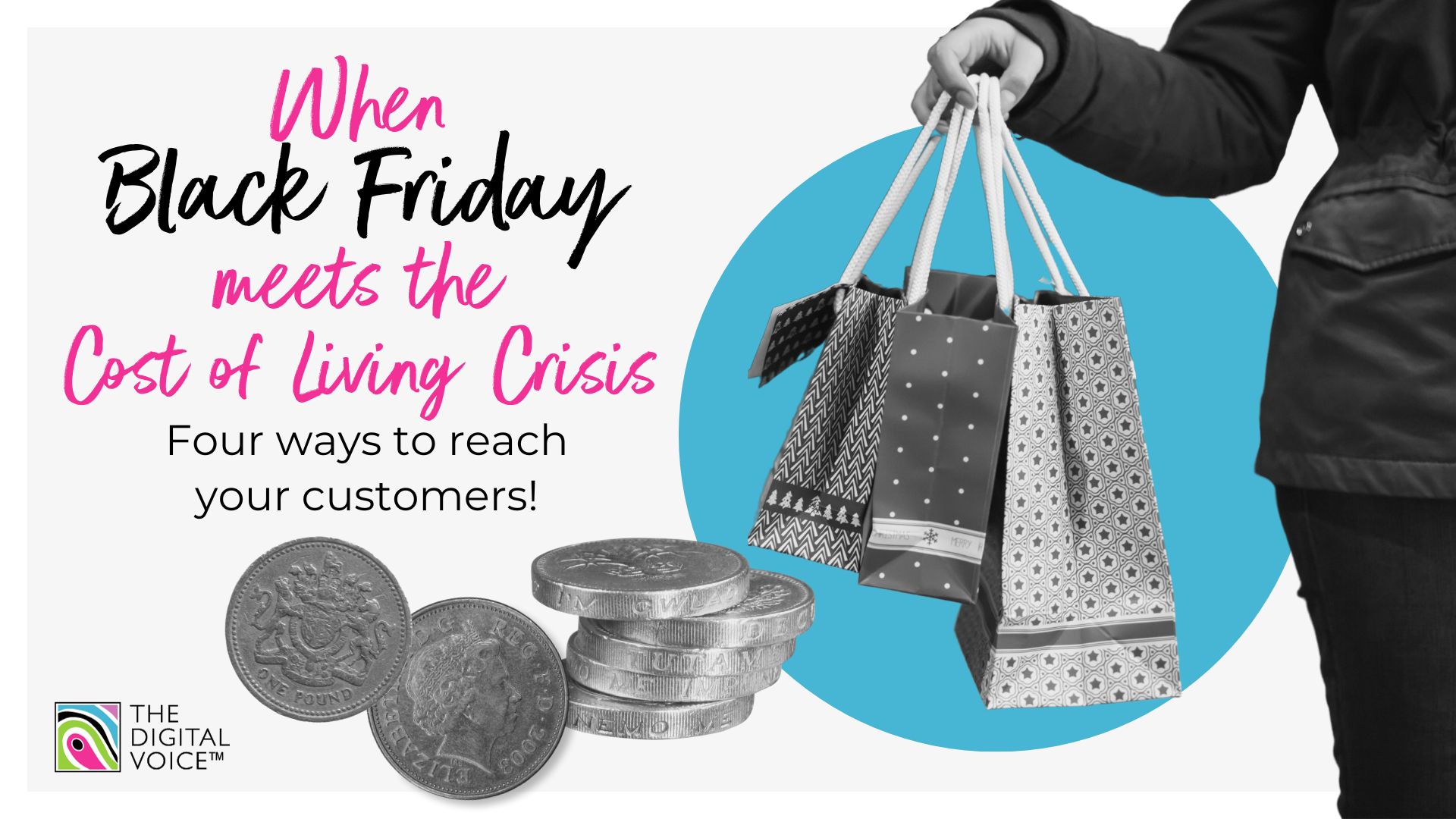When Black Friday meets the Cost of Living crisis
Four ways to reach your customers

There’s always plenty of hype around consumer spending as we approach retail’s Golden Quarter. But against the backdrop of the cost-of-living crisis, how are consumers feeling in 2023? And through which channels are they most likely to engage?
With the results from the latest
Shopify-Gallup Holiday Shopping Pulse hot off the press, alongside
Sapio Research’s global survey, we take a look at consumer sentiment, and explore how marketers can make the most of their Black Friday-Cyber Monday (BFCM) campaigns.
The good news for merchants is, almost three-quarters of consumers (74%) are planning to spend the same or more on gifts this festive season compared with 2022.
What’s more, around seven in ten consumers (72%) say they’re more likely to shop during BFCM to get ‘more for their money’ in light of current inflation and cost of living increases. And, with a similar proportion (71%) saying it’s
important for brands to communicate their offers ahead of BFCM, it’s clear there is no time to waste in gearing up for what has become the busiest season in the retail calendar.
Let’s take a look at four top channels to reach consumers this BFCM:
1. IN-STORE
Despite the rise in online shopping in recent decades, there’s nothing quite like browsing a real-life store, with just over a third of consumers (34%) saying it’s still their favourite way to discover new products. When it comes to the retailer perspective, four-fifths of businesses (81%) say physical stores are as important as last year, or more so.
The rise of tech-enabled shopping will also have a big impact on consumers this festive season, with two-fifths of shoppers (39%) saying they’re more likely to buy from brands that embed technology into the shopping experience.
The digitisation of the store environment is also set to fuel the next evolution of retail media networks, making it even more important to connect digital capabilities across channels.
What we’re seeing:
More and more retail brands are connecting the dots between online and in-store for a more seamless shopping experience. For example,
Nectar360 has recently worked with ClearChannel UK to
double its network of digital screens in Sainsbury’s stores, which includes upgrading and expanding the number of external screens, as well as building a brand new network of digital advertising screens within stores.
As Nectar360’s MD Amir Rasekh explains: “Connected screens offer huge potential to generate a range of customer interactions, including QR codes and relevant offers, as well as building brand and product awareness, to provide an in-store experience that will inspire shoppers.”
Talking about the future of retail media networks, Amir says:
“Over time, this partnership will allow us to connect our entire retail media offering through ad tech - in-store, on-site and off-site.”
2. OUT-OF-HOME
OOH has rapidly gained momentum in 2023, as technology continues to advance to deliver eye-catching campaigns across billboards, bus stops, retail stores and more. In fact, the channel is set to reach a staggering
$55bn in 2028, with a CAGR of 5.62% between 2022 and 2028.
What we’re seeing:
Deckers Brands is one such company that has leveraged 3D OOH technology, powered by
Jellyfish, to deliver two immersive ad campaigns in Times Square this year. In August, HOKA launched its first-ever US-based 3D billboard campaign showcasing the newly-launched
Mach X, breakthrough ad creatives. And in October, UGG showcased its new
winter lifestyle collection across the world-famous billboards.
3. ECOMMERCE PLATFORMS
Ecommerce platforms have increasingly offered the ideal setting for retail media in recent years. And with
84% of consumers comparing prices to find the best deals and discounts this festive season, these are the perfect platforms for brands to share their BFCM offers.
What we’re seeing:
Until now, larger brands generally had the best access to retail media, because many advertising platforms (e.g. DSPs) had a minimum monthly spend. Thankfully, this is changing, with adtech companies such as
Preciso opening the doors to advertisers of all sizes. This year for example, adding to their existing roster of ecommerce partners (which include WooCommerce and Magento), the company announced a
new integration with Shopify, further opening up the programmatic market to SME ecommerce vendors.
As Preciso’s CEO, Piero Pavone
explains:
“The rise of retail media is no surprise to us, nor the fact that Amazon sits at the centre of this trend, but the size of its share does emphasise the importance for tools that benefit smaller retailers who wish to operate outside Amazon’s shadow - for instance, Shopify merchants.”
Piero continues: “As the big get bigger, small retailers need to do what they can to maximise their customer data, retain customer loyalty and optimise campaigns around their own products and stores, to ensure that retail media isn’t simply dominated by those with the greatest resources.”
4. EMAIL (TURBOCHARGED BY AI)
Email marketing is nothing new, and if anything, getting it wrong can be costly in terms of brand reputation. However, it’s the one channel that everyone uses - not only in business but also in our personal shopping journeys.
What we’re seeing:
We know email works. As Suzanna Chaplin, CEO of
esbconnect explains, “email is the backbone of most businesses. When Covid hit, marketers pulled back on their acquisition spend to focus on their CRM as an easy, low-cost channel to reach current customers and get them to convert. And it worked. Rather than simply a communication channel, it is actually the connector that gives you the ability to create a journey across all different channels.”
Suzanna continues:
“Say your customer uses Facebook, but then they also watch their favourite TV programme in the evening. After loading your email audience into Facebook, and targeting them there, you then load that same audience into a CTV platform, and retarget them there. So you're using email, but not as a communication channel - rather a connector”.
Meanwhile, almost seven in ten consumers (69%) think AI will make it easier to discover new brands and products, while almost three-quarters (74%) say it will help them find deals and special offers, and over a third (67%) think it’ll make it easier to get recommendations based on previous purchases. So what happens when we add a layer of AI to email?
As Suzanna explains:
“We’re now using automation to make email marketing feel truly one-to-one. The power of AI gives you the ability to do that at scale. So rather than creating an automation where you send 10,000 people the same thing, you can now use it to send 10,000 personalised messages.”
With a promising outlook for consumer spend, these are some of the hottest channels out there for marketers to leverage right now. However, with the cost-of-living crisis far from over, brands mustn’t become complacent in their quest to reach and engage with customers this BFCM. And they should be communicating their offers clearly - starting today.

Having combined her love of language and linguistics with a career in tech marketing and PR, Hazel has gained a wealth of expertise both agency-side and client-side. She loves nothing more than exploring disruptive technology and meeting new faces at industry events (as a German speaker, DMEXCO is a firm favourite).



